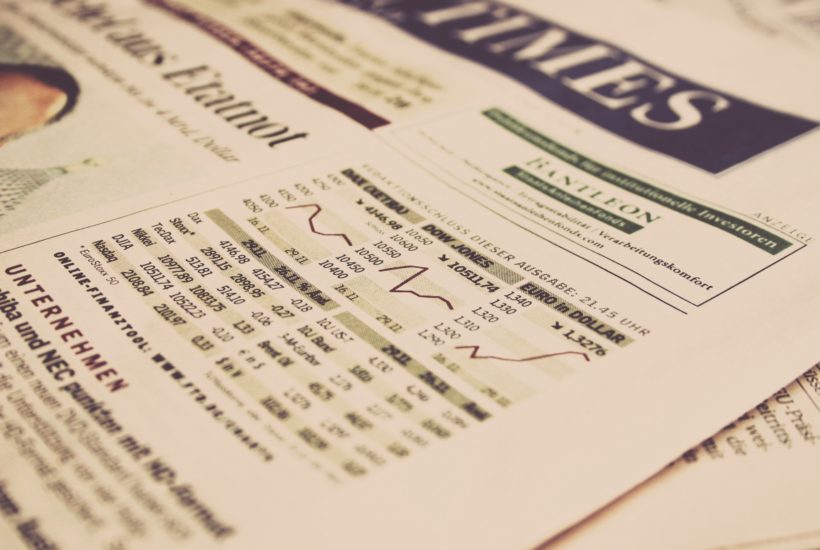Featured
Will the interest rate cuts be enough to avert a recession?
Wall Street is completely confident that this move will not only be enough to pull the global economy out of its malaise but will also be sufficient to provide enough monetary thrust to blow asset bubbles. However, the stimulus does not always work, during both 2000 and 2008, these cuts were not enough to avert a recession and did nothing to prevent the stock market from collapsing.

The mainstream financial media is cheerful about global central banks’ renewed enthusiasm. They mean to cut interest rates to a level that is even lower than they already are.
Wall Street is confident that these marginally-lower borrowing costs will not only pull the global economy out of its malaise; but will also be sufficient to provide enough monetary thrust to blow asset bubbles into the thermosphere.
However, the truth is Fed stimulus does not always work. This was the case during both 2000 and 2008. A significant amount of rate cuts was not enough to avert a recession. Furthermore, it also did nothing in the way of preventing the stock market from collapsing.
Looking back
During the mid to late ’90s, the Fed’s 175bps of rate cuts did help keep the “irrational exuberance” alive in the equity market. It helped propel the NASDAQ to what turned out to be a very dangerous level by the end of the decade. But then, reality inevitably came calling; and tech stocks crashed by nearly 80% from March of 2000 through the fall of 2002.
That recession and concomitant plunge in stock prices occurred despite the Fed’s 550bps of rate cuts from 2001-2003. Likewise, the Fed’s 525bps worth of rate reductions occurring from 2007-2008 was insufficient to check the Great Recession. The 33% wipeout of home values and half the value of the S&P 500.
Today, we see not only has the Fed cut rates by 50 bps, but also many other central banks around the world have embraced a dovish tone.
But again, the question must be asked; will these rate cuts become a panacea for the economy and markets like they were for a few years during the mid and late nineties; or will it turn out to be a complete debacle like the last two rate-cutting cycles. Wall Street, and it’s shilling. Believe in central bank omnipotence and omniscience, but history clearly illustrates their fallibility.
Reserve Bank of India
For a current example, let’s look at India. The Reserve Bank of India (RBI) last Friday cut its benchmark repurchase rate for the fifth consecutive time this year.
The RBI cut rates by 25bps on October 6th to 5.15% and the government recently enacted a major tax-cutting package as well. One would assume that the NSE India Nifty 50 Index should be soaring with the amount of fiscal and monetary stimuli thrown at it.
However, shares are up just 2.8% since January 2019, yet also down 8% since June. That 2.8% increase for this year is expressed in Rupees. The iShares Nifty 50 ETF (INDY), which tracks the Index in US dollars, is up just 1.6% year-to-date.
India is not in a recession and its equity prices are by no means crashing, but the massive stimulus already thrown at its market and economy is simply not working at this point. What is clear is that India’s stock market is floundering while its rate of GDP growth has dropped to a 6-year low.
Not only is it true that interest rate cuts don’t always work like magic but it is also a fact that there is absolutely not much more room to lower borrowing costs on a global basis.
It normally takes over 500 bps of rate cuts to eventually stabilize markets. However, now all we have in the U.S. is 175 bps left to cut before money becomes free and the ECB and BOJ are already below zero.

Effectiveness of rate cuts
Whether or not rate cuts are effective has to do with debt levels, demographics, the presence of asset bubbles and the degree in which central banks have the ability to reduce borrowing costs.
None of those metrics offer much hope for this current rate-cutting cycle. Once and an economy becomes over-leveraged, has insufficient labor force growth, overvalued asset prices and where its central bank is already close to the zero bound; turning dovish at that point just isn’t very effective.
Global central banks are short on ammo and cannot easily ameliorate the damaged state of worldwide GDP growth. In fact, the OECD cut its forecast for global growth to just 2.9% for this year–that is the slowest rate of growth since 2009.
Turning to the U.S, the ISM surveys show the economy took a sharp turn south in September. Overnight lending in the banking system is still so fragile that the Fed had to extend its Repo facility until November 4th.
The yield curve remains inverted from Fed Funds all the way through the 10-year Note—which, is the most important part of the yield curve–and this has been the case for the last five months. And, the total net new job creation in both the public and private sectors is weakening.
Job growth averaged just 119,000
The 3-month rolling average for total new job creation for September 2019 was just 146k; that is down from the year-ago level of 189k–that is a decline of 23%. Things were worse in the private sector; job growth averaged 119,000 in the last three months. This is down from the 215,000 net new jobs created for all of 2018.
S&P 500 earnings are expected to post three consecutive quarters of negative growth; and the report for this Q3 earnings season is projected to come in at -4.1%, according to FactSet.
Meanwhile, the annual fiscal deficit has breached above the trillion-dollar level for the first time since 2012. It is projected by the Congressional Budget Office to average $1.2 trillion for each year over the next decade.

The best-case scenario
My base case scenario is that the current regime of fiscal and monetary policy has become exhausted. This is despite the fact that they have already gone beyond any measure of conventionality or reason.
Therefore, in order to meaningfully boost asset prices higher, central banks will need to move further. They go into the realm of unorthodoxy by deploying massive amounts of helicopter money directly to the public.
Unfortunately, that type of lunacy is most likely where the Fed is eventually headed. Having an investment model that tracks such dramatic changes in the rate of economic growth and inflation has become 100% mandatory.
—
(Featured image by Pexels)
DISCLAIMER: This article expresses my own ideas and opinions. Any information I have shared are from sources that I believe to be reliable and accurate. I did not receive any financial compensation for writing this post, nor do I own any shares in any company I’ve mentioned. I encourage any reader to do their own diligent research first before making any investment decisions.

-

 Biotech1 week ago
Biotech1 week agoSpending on R&D in Biotechnology Increased by 13% in 2022 and Reached 2.56 Billion
-

 Fintech2 weeks ago
Fintech2 weeks agoHow InnoFintech Is Promoting Innovation in the Financial Market
-

 Markets4 days ago
Markets4 days agoTariffs Have Been Imposed by the U.S. Against a Growing Number of Countries
-

 Impact Investing1 week ago
Impact Investing1 week agoEnvironmentalists and Consumers Denounce Repsol for Greenwashing




![RDE, Inc. [ OTC: RSTN ] is set to soar in a perfect storm](https://born2invest.com/wp-content/uploads/2024/02/pexels-burak-the-weekender-187041-400x240.jpg)
![RDE, Inc. [ OTC: RSTN ] is set to soar in a perfect storm](https://born2invest.com/wp-content/uploads/2024/02/pexels-burak-the-weekender-187041-80x80.jpg)



















